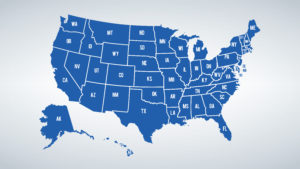5 Strategies to Successful Cash Flow Management
5 Strategies to Successful Cash Flow Management
By John Reddish
How can you predict, avoid and/or, minimize the impact of a cash emergency? Managing cash flow is every manager’s challenge, every day, every year. Those managers who keep a close eye on their daily activity and emerging industry trends can help reduce their company’s exposure to the chill of a cash crunch. In an increasingly competitive world, you need to be alert.
How can you predict, avoid and/or, minimize the impact of a cash emergency? First, pay attention when any cash shortages arise. When cash gets short, pay close attention and be prepared to act. Questions to be answered include:
1. What caused the problem? Pre-payments to take advantage of special discounts can reduce cash. Transportation strikes, for example, could delay shipments and therefore payments. An industry (or economy) slowdown will often result in customers stretching out their payables.
2. How can you cope? If cash on hand is not robust, let the special discounts go. It’s usually more cost-effective to pass on a discount than to borrow to overcome a shortfall. Keep up on the news. If you hear about any threatened strikes and/or disruptions to your supply chain, make sure you have a back-up position. Even if temporarily more expensive, it can save your business by showing your customers your reliability and versatility in challenging times. If your customers are in industries facing hard economic times, keep closer tabs on your credit policies and be active in collections. If necessary, tighten credit terms, but use discretion. Being firm but supportive to your customers will go a long way in keeping them in the fold while still giving you a better cash flow. Defer purchases and/or negotiate extended payments if cash gets short.
Most importantly, document both the signals of problems and your solutions. That way, if the signals happen again, you can refer to prior successful action as a first possible solution.
Imagine possible, but normally unpredictable cash flow challenges. Some problems can’t be anticipated, so “what if” scenarios can be created. You don’t have to get elaborate, but you can ask what would happen if there were a flood, or, as we’ve experienced more recently, a devastating hurricane. What then? Other problems, such as “product sabotage” can only be dealt with as they occur. Constructing possible scenarios to reduce risks associated with “unforeseeable” problems is an important management tool. Learn from, and document, each experience, or you may have to repeat it.
Second, watch sales. Any prolonged (and “prolonged” computes differently for each company and industry) drop in sales without a comparable — and simultaneously emerging — reduction in expenses is a prescription for trouble. Of course, there is at usually some lag between sales changes and a compensating contraction in expenses, but early diagnosis can reduce the negative impacts significantly. Once a changing trend has been identified, act promptly or the impact of the lag will be more severe.
Third, review the budget. If short-term borrowing is regularly needed to meet normal operating costs, the unavailability of such loans or a sudden change in operating expense could be devastating.
If ongoing operations cannot be supported by sales, either more sales are needed, fewer expenses must be incurred or a combination of the two is in order. While this sounds very simple, all too many companies hesitate “in hopeful anticipation”.
If remedies are not introduced on a timely basis, a severe cash crunch could follow.
Fourth, keep a close eye on new product development. In many companies, R&D expenditures for new products are often allowed far greater variance from projected budgets than normal expenditures. After all, when you create something new, it is really hard to accurately predict costs — or turnaround time — at the outset.
Failure to keep these costs, and time commitments, within bounds or monitor their continuing impact and cost/benefit can lead to continued funding of projects well beyond when they should be cut off. Overall cash flow can be easily drained into a seemingly bottomless pit, and often an entire company is jeopardized by one errant project.
Fifth, beware of pet projects. A pet project is any organizational activity undertaken for ego value rather than consistency with the organization’s mission and profit targets. Pet projects, whether new ventures or ongoing cost/profit centers, can often lead to cash flow problems. All organizations have pet projects from time to time. Failure to recognize and deal with a pet project when a cash crunch looms has been the death knell for many companies.
Many cash flow challenges have such simple origins. Often it’s simply a matter of days, or weeks and they can creep up on you. And the daily grind can cloud your vision, encourages false hope or distract you just long enough for problems to take hold. You can learn from past and/or current cash shortages. You can be watchful that sales, budget and R&D costs stay in line. You can keep a lid on pet projects. In an increasingly competitive world, you need to be alert.
John Reddish works with and speaks to entrepreneurs and top executives who want to master growth, transition and succession, helping them to get results faster, less painfully and in ways that work for them. Author, speaker, consultant and mentor, John is a member of the National Speakers Assn.
We hope you found this article about “5 Strategies to Successful Cash Flow Management” helpful. If you have questions or need expert tax or family office advice that’s refreshingly objective (we never sell investments), please contact us or visit our Family office page or website www.GROCO.com.
To receive our free newsletter, contact us here.
Subscribe our YouTube Channel for more updates.

Alan Olsen, is the Host of the American Dreams Show and the Managing Partner of GROCO.com. GROCO is a premier family office and tax advisory firm located in the San Francisco Bay area serving clients all over the world.
Alan L. Olsen, CPA, Wikipedia Bio

GROCO.com is a proud sponsor of The American Dreams Show.

The American Dreams show was the brainchild of Alan Olsen, CPA, MBA. It was originally created to fill a specific need; often inexperienced entrepreneurs lacked basic information about raising capital and how to successfully start a business.
Alan sincerely wanted to respond to the many requests from aspiring entrepreneurs asking for the information and introductions they needed. But he had to find a way to help in which his venture capital clients and friends would not mind.
The American Dreams show became the solution, first as a radio show and now with YouTube videos as well. Always respectful of interview guest’s time, he’s able to give access to individuals information and inspiration previously inaccessible to the first-time entrepreneurs who need it most.
They can listen to venture capitalists and successful business people explain first-hand, how they got to where they are, how to start a company, how to overcome challenges, how they see the future evolving, opportunities, work-life balance and so much more..
American Dreams discusses many topics from some of the world’s most successful individuals about their secrets to life’s success. Topics from guest have included:
Creating purpose in life / Building a foundation for their life / Solving problems / Finding fulfillment through philanthropy and service / Becoming self-reliant / Enhancing effective leadership / Balancing family and work…

MyPaths.com (Also sponsored by GROCO) provides free access to content and world-class entrepreneurs, influencers and thought leaders’ personal success stories. To help you find your path in life to true, sustainable success & happiness. It’s mission statement:
In an increasingly complex and difficult world, we hope to help you find your personal path in life and build a strong foundation by learning how others found success and happiness. True and sustainable success and happiness are different for each one of us but possible, often despite significant challenges.
Our mission at MyPaths.com is to provide resources and firsthand accounts of how others found their paths in life, so you can do the same.
India Teaming Up With United States in Joint Effort to Find Hidden Cash
India is reportedly going after so called “black money” which Indian citizens who are living abroad, are apparently hiding in offshore accounts, including here in the United States. According to reports, the Indian Government believes that as much as $350 billion is hiding in unreported bank accounts and other financial institutions. India is already gathering…
Is Your Company in the Market for a Fairness Opinion?
Is Your Company in the Market for a Fairness Opinion? Is that really fair? In my opinion, yes it is. Obviously a fairness opinion is much more than that in the financial and business world. So what is a fairness opinion, exactly? One of the final parts of any sale or merger is a fairness…
Communication Between Managers and their Employees
By Emily Topham Communication Between Managers and Their Employees Managers have a daunting task—finding the right level of communication between them and their employees. It can be difficult for new managers to transition into the level of communication that is required by a leadership position. But discovering how to communicate well can make or…
Which States Are Good, and Bad, for Taxes?
How attached are you to the state you live in? Although most people would rather not relocate, where a person lives can actually make a huge difference in his or her tax bill. That’s because Kiplinger recently released its list of the most and least “tax-friendly” states when it comes to taxes. The business publisher…



